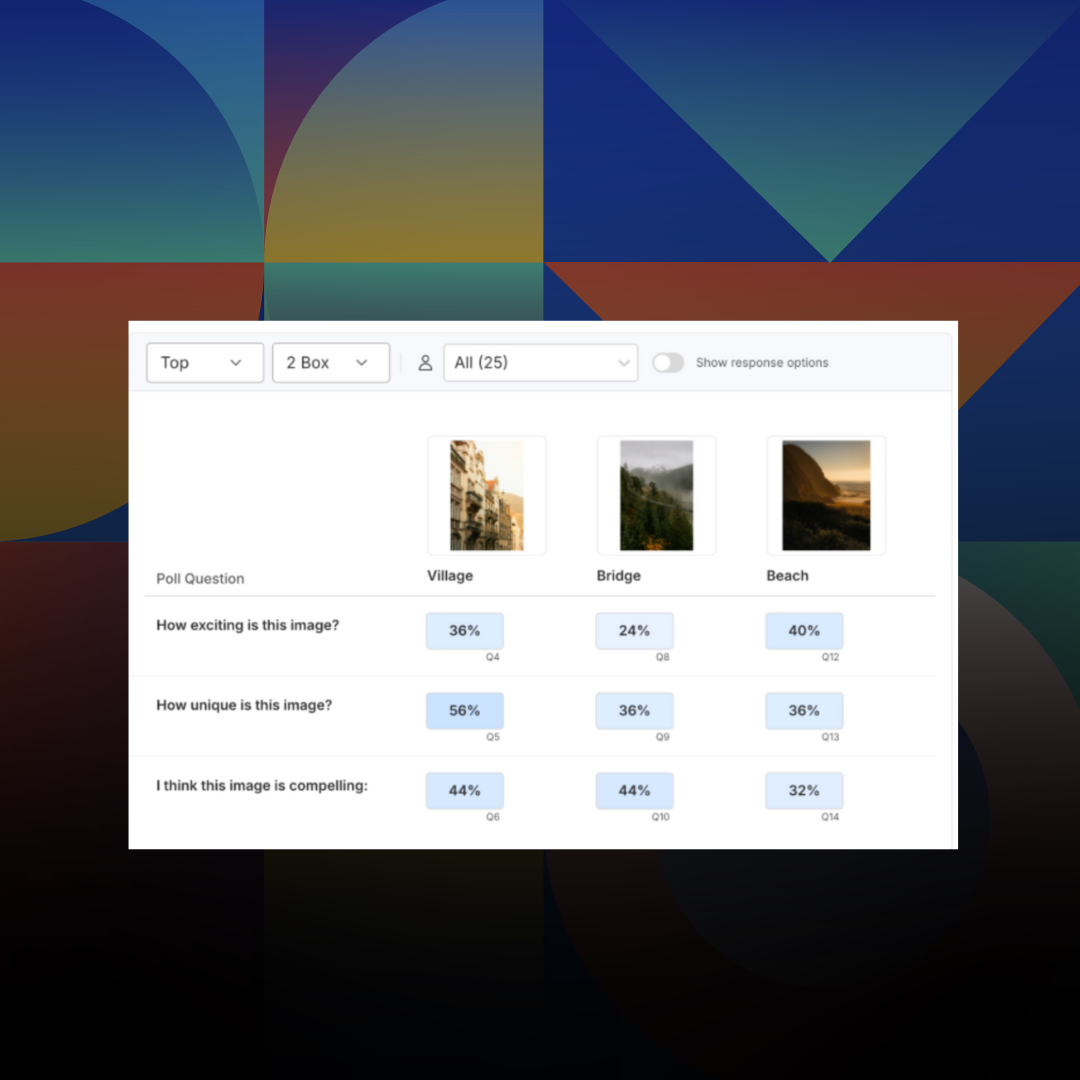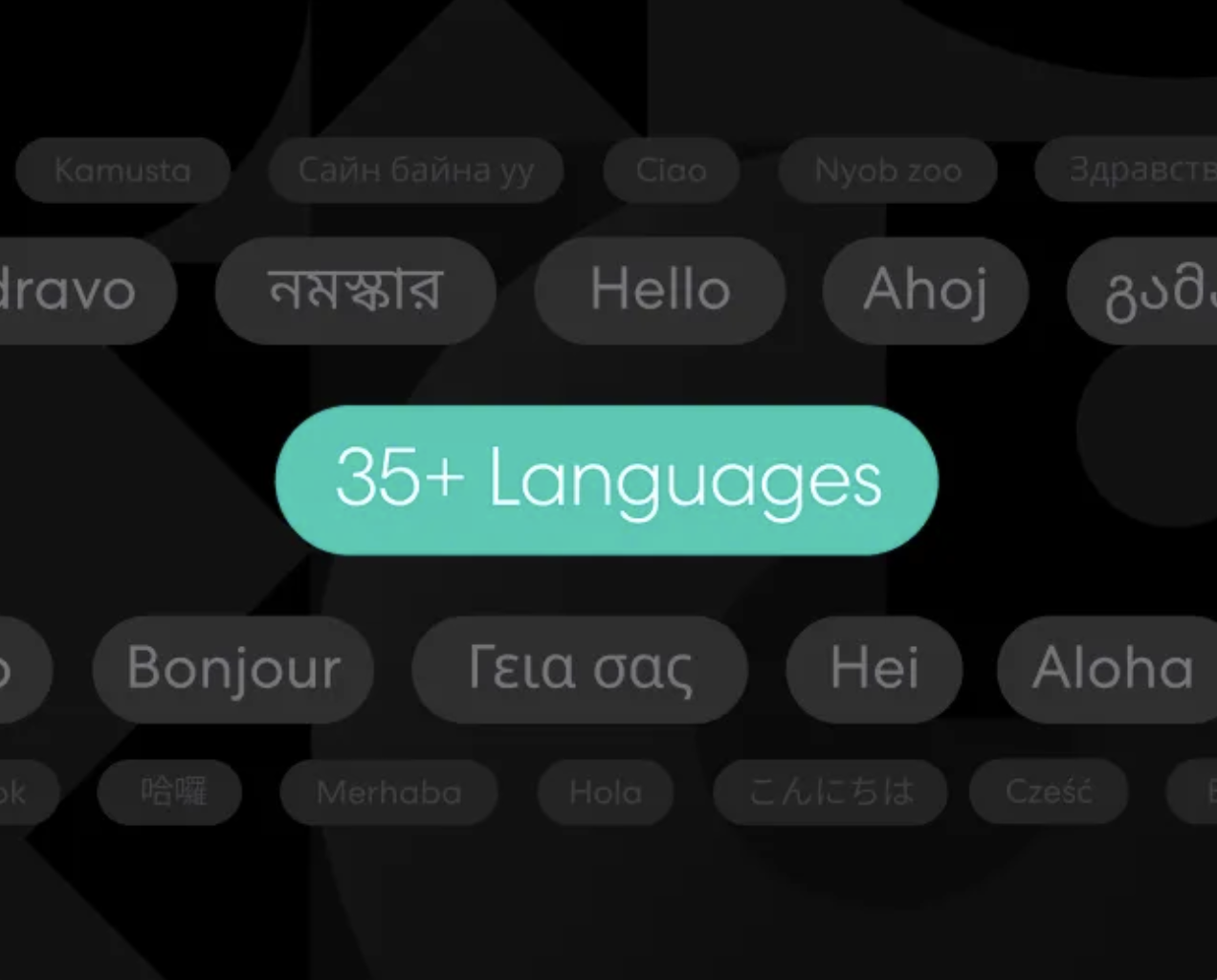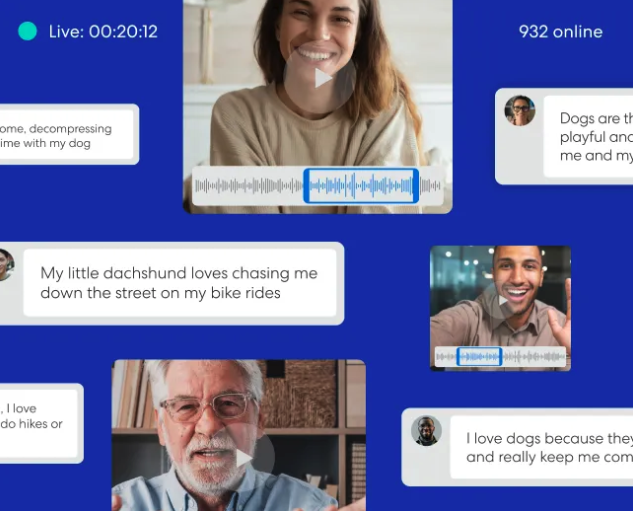
Research 101
Introducing: Poll Comparison - Streamline Concept Testing and Make Better Decisions Faster
Emmet Hennessy
November 24, 2025
Market Research
Articles

Research 101
Introducing: Poll Comparison - Streamline Concept Testing and Make Better Decisions Faster
Emmet Hennessy
November 24, 2025
Market Research
Articles

AI
Purpose-Built for Research AI is Here - a Letter from the CPO
Jessica Dubin
October 21, 2025
Market Research
Articles

AI
Purpose-Built for Research AI is Here - a Letter from the CPO
Jessica Dubin
October 21, 2025
Market Research
Articles

Advanced Research
Unlock Agile Global Insights: Using Remesh Multi-Language Conversations for Research Across Audiences
Customer Success Team
October 14, 2025
Market Research
Articles

Advanced Research
Unlock Agile Global Insights: Using Remesh Multi-Language Conversations for Research Across Audiences
Customer Success Team
October 14, 2025
Market Research
Articles

AI
The Prompt Is the New Moderator Guide
Anthony Lam
September 16, 2025
Market Research
Articles

AI
The Prompt Is the New Moderator Guide
Anthony Lam
September 16, 2025
Market Research
Articles

AI
Building an AI-Ready Research Stack: Beyond Data Preparation
Anthony Lam
September 9, 2025
Market Research
Articles

AI
Building an AI-Ready Research Stack: Beyond Data Preparation
Anthony Lam
September 9, 2025
Market Research
Articles

AI
Agentic AI for Research: A Practical Primer
Dan Reich
September 2, 2025
Market Research
Articles

AI
Agentic AI for Research: A Practical Primer
Dan Reich
September 2, 2025
Market Research
Articles

Advanced Research
Webinar Recap: Unlocking Depth at Scale - Remesh Video for Researchers
Customer Success Team
August 5, 2025
Market Research
Webinars

Advanced Research
Webinar Recap: Unlocking Depth at Scale - Remesh Video for Researchers
Customer Success Team
August 5, 2025
Market Research
Webinars

Transparency in AI: How Remesh Builds Trust Through Responsible Implementation
Ross Coudeyras
July 21, 2025
Articles

Transparency in AI: How Remesh Builds Trust Through Responsible Implementation
Ross Coudeyras
July 21, 2025
Articles

Advanced Research
Webinar Recap: Turning Employee Engagement Insights into Action with Remesh
Customer Success Team
June 16, 2025
Employee Research
Articles

Advanced Research
Webinar Recap: Turning Employee Engagement Insights into Action with Remesh
Customer Success Team
June 16, 2025
Employee Research
Articles
Want to Fix Things Fast? Take a Rapid Research Approach
Discover how to turn your organization around with rapid research. Learn how to work efficiently and do research faster.



“We’re halfway through the year and we’re falling behind. We need to make changes, and we need to make them fast.”
That’s how one of our clients, a chief operating officer at a mid-sized tech firm, opened a recent call. She had just read Move Fast and Fix Things, and she was desperate to turn things around in her organization.
The need for rapid research
“Our employees are exhausted. Everyone’s stressed. And I don’t feel like we’re working as efficiently as we could,” she said. When we asked why she felt this way, she said, “We conducted an employee survey in the first quarter and that showed some declines. And I’ve hosted some town halls in recent months. But I am not hearing from enough people. I’m not hearing enough new ideas. Our industry is moving at hyper-speed. We need to figure out ways to improve and evolve or we’re going to keep falling behind.”
In recent years, we’ve heard this same concern across organizations. It started during the pandemic when multiple clients came to us looking to make quick sense of emerging workplace issues and complex challenges. As we helped our clients, we realized they needed a way to gather and analyze high-quality qualitative and quantitative feedback in a matter of hours and days, not weeks or months. We noticed a similar trend in the public health field, where researchers started using these techniques to study Covid-19.
Developing a rapid research solution
With speed to insight in mind, our product development team and research experts started developing technology-based ways to streamline research practices and compress research timelines. As a result, Remesh is now one of the nimblest employee listening platforms on the market, allowing organizations to conduct rigorous research in a fraction of the time it takes to use traditional methods.
When we told our client how quickly a Remesh conversation could be deployed, she asked, “Could we have a conversation this Thursday? I am hosting another town hall, and we have a C-suite meeting on Friday. I want to bring new ideas from the frontline to that meeting.”
It was Tuesday, just two days before the town hall. But based on our experience conducting rapid research studies, we knew it was possible.
Designing a rapid research project
When we help our clients design rapid research projects, we start by exploring their goals and objectives. We asked the COO to identify the three main things she wanted to learn from her workforce and the one main impact she wanted this study to have on her organization. Her response came quickly. “I want to know what’s working, what isn’t, and what employees think we need to do to reach our year-end goals. In terms of impact, I want this study to spark a fire—to really help build motivation and energy and a sense of hope.”
With these goals and objectives in mind, we worked with the COO and her team to design a conversation guide. Using our library of best-in-class diagnostic items, which contains over 150 open and closed-ended questions about everything from leader and team behavior to organizational culture and values, we were able to quickly assemble a conversation guide that asked employees to identify performance facilitators and roadblocks. Informed by the work of Karl Weick and Teresa Amabile, we also asked employees to identify small wins that could help the organization meet its year-end goals.
Overcoming language barriers
After finalizing the conversation guide, our COO raised a new concern. “We have employees in multiple countries. When we send out communications or conduct surveys, we always make sure they are in language. How are we going to get this conversation guide translated into multiple languages by Thursday?”
Fortunately, the Remesh platform allows researchers to conduct conversations in over 35 languages. Using the multi-language translation function within the platform, we were able to translate and program the conversation in all required languages. And using the Simulate capabilities, we were able to preview the conversation to a team of in-country reviewers to ensure all translations were clear and accurate.
Conducting the rapid research
By the day of the town hall, they were ready to engage employees in a 25-minute Remesh conversation. Using an anonymous participation link, employees were able to log in from their phones and computers and engage in a dynamic collective dialogue with their peers. Unlike traditional surveys, which intentionally isolate employees from each other as they complete Likert scales, Remesh conversations allow employees to talk to each other, share their thoughts and insights, voice their concerns and observations, and review and endorse the suggestions and ideas (in this case, small wins) they agree with. And unlike traditional interviews or focus groups, which can often be dominated by loud voices or squeaky wheels, everyone has an equal chance to share their feedback.
When the conversation closed, our COO was exhilarated. “That was incredible. I’ve never seen so many great ideas from so many people expressed in such a short period of time!” But then, in a bit of a panic, she said: “How are we going to make sense of all that data before tomorrow?”
At that point, her direct report, who had deep experience using the platform, chimed in. “Here’s a topline report that summarizes all the quantitative and qualitative results. The platform generates this once the conversation closes.”
“And,” she said, “we can use Remesh’s AI technology to help make sense of all the data.” With that, we showed the COO how to use AutoCode and Thematic Clustering to code and categorize the open-ended comments. Then we showed her how Summarize could be used to provide a narrative overview of both qualitative and quantitative data.
By Friday, less than 72 hours after our first discussion, the COO had the insights she needed for her meeting.
-
Lorem ipsum dolor sit amet, consectetur adipiscing elit. Suspendisse varius enim in eros elementum tristique. Duis cursus, mi quis viverra ornare, eros dolor interdum nulla, ut commodo diam libero vitae erat. Aenean faucibus nibh et justo cursus id rutrum lorem imperdiet. Nunc ut sem vitae risus tristique posuere.
-
Lorem ipsum dolor sit amet, consectetur adipiscing elit. Suspendisse varius enim in eros elementum tristique. Duis cursus, mi quis viverra ornare, eros dolor interdum nulla, ut commodo diam libero vitae erat. Aenean faucibus nibh et justo cursus id rutrum lorem imperdiet. Nunc ut sem vitae risus tristique posuere.
-
More

Introducing: Poll Comparison - Streamline Concept Testing and Make Better Decisions Faster

.png)

.png)
Read More

.png)
.png)
.png)

.png)

.png)
Learn More

.png)
.png)
.png)


Unlock Agile Global Insights: Using Remesh Multi-Language Conversations for Research Across Audiences

.png)

.png)
Read More

.png)
.png)
.png)

.png)

.png)
Learn More

.png)
.png)
.png)
Stay up-to date.
Stay ahead of the curve. Get it all. Or get what suits you. Our 101 material is great if you’re used to working with an agency. Are you a seasoned pro? Sign up to receive just our advanced materials.




